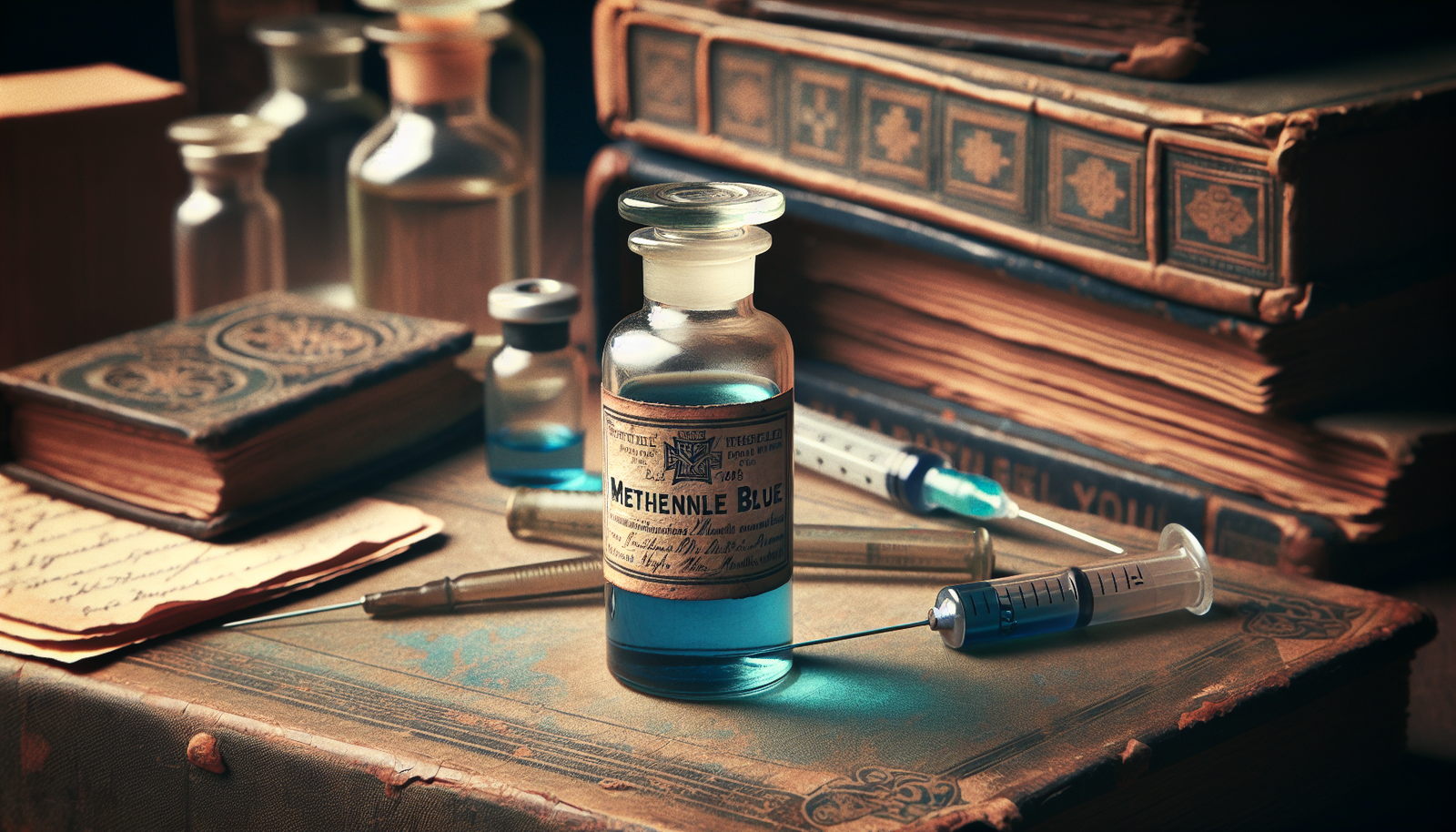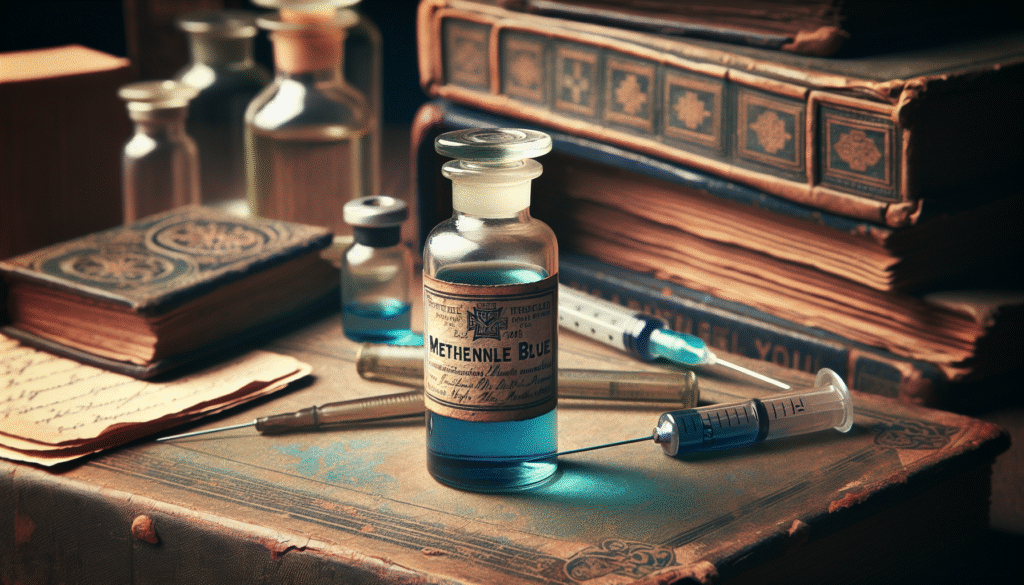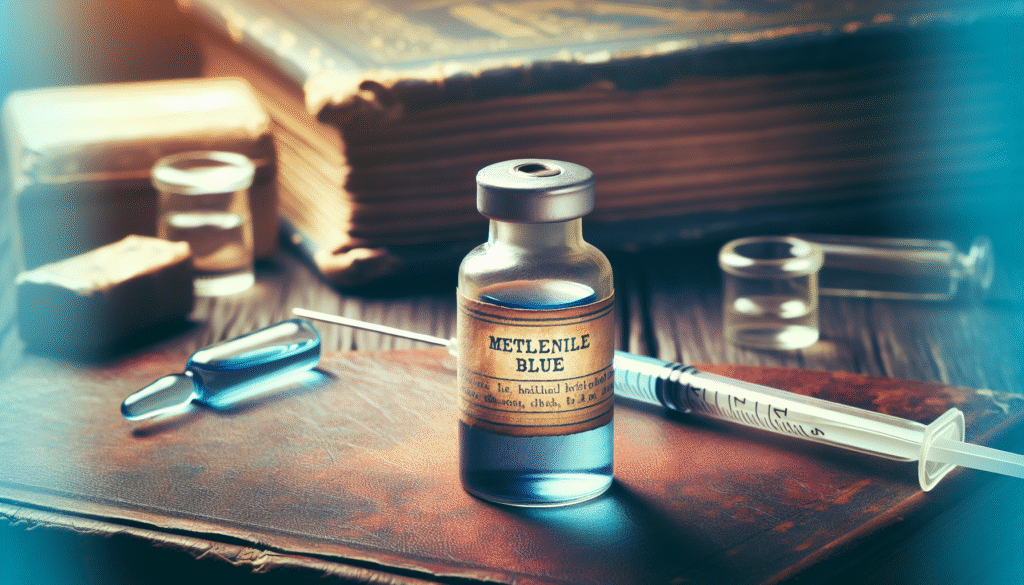
Have you ever wondered about the longevity and versatility of certain compounds in medicine, particularly those that have stood the test of time? One such compound is Methylene Blue, a dye that has found numerous applications in healthcare over the years. Its rich history reflects both its potential benefits and the evolving understanding of its effects.
The Origins of Methylene Blue
Methylene Blue was first synthesized in 1876 by German scientist Heinrich Caro. Initially used as a textile dye, its vibrant blue color did not go unnoticed in the medical community. By the late 19th century, researchers began exploring its potential therapeutic effects, marking the beginning of a fascinating journey through medical history.
Initial Medical Applications
One of the earliest medical applications of Methylene Blue was as an antiseptic. Its ability to stain microorganisms led to studies investigating its efficacy in treating infections. Notably, during World War I, it was used to combat malaria, where early clinical studies indicated promising outcomes. Despite being overshadowed by more effective antimalarial drugs, Methylene Blue remained a subject of interest.
Methylene Blue in Microbiology
Laboratory Use
Methylene Blue is widely utilized as a dye in microbiology laboratories. Its properties allow scientists to visualize biological structures with precision. By staining cells, particularly bacteria, this compound aids in differentiating between various species—a process crucial for accurate identification and treatment.
Antimicrobial Properties
The antimicrobial properties of Methylene Blue have garnered significant attention. Studies have demonstrated its effectiveness against a range of pathogens, including bacteria and fungi. This opens avenues for using Methylene Blue in treating infections, particularly in patients who may not respond well to traditional antibiotics.

The Renaissance of Methylene Blue
Neuroprotective Effects
In recent years, research has indicated that Methylene Blue may offer neuroprotective benefits. Some studies suggest that it can enhance mitochondrial function, which is vital for energy production in brain cells. This discovery gives rise to potential therapeutic applications in neurodegenerative diseases such as Alzheimer’s and Parkinson’s.
Treatment for Methemoglobinemia
Methylene Blue is also recognized for its role in treating methemoglobinemia, a condition where the blood cannot effectively carry oxygen. Administering Methylene Blue can restore normal hemoglobin function, providing immediate relief to affected patients. This use underscores the compound’s medical significance beyond its historical applications.
Pharmacological Mechanisms
Mechanism of Action
Understanding the pharmacological mechanisms of Methylene Blue provides insight into its diverse medical applications. It acts primarily as an electron donor, facilitating the conversion of methemoglobin back to hemoglobin. Furthermore, it possesses antioxidant properties, which can protect cells from oxidative stress—an essential function in numerous medical contexts.
Dosage and Administration
The safe and effective use of Methylene Blue requires careful consideration of dosage. Administered intravenously for urgent conditions such as methemoglobinemia, the dosage often ranges from 1 to 2 mg/kg. In clinical studies focusing on neuroprotection, lower doses are typically explored to assess safety and efficacy without adverse effects.

Contemporary Research
Ongoing Clinical Trials
Contemporary research continues to investigate Methylene Blue’s potential in various medical fields. Numerous clinical trials are exploring its use in psychiatric conditions, including depression and anxiety. Preliminary findings suggest that it may help enhance cognitive function and mood stabilization, signaling a promising future for this historical compound.
Methylene Blue in Cancer Treatment
Recent investigations have also examined the efficacy of Methylene Blue in cancer treatment. It possesses photosensitizing properties, making it a candidate for photodynamic therapy. This approach involves using light to activate the compound, leading to targeted destruction of cancerous cells, thus minimizing damage to surrounding healthy tissue.
Safety and Side Effects
Adverse Reactions
While Methylene Blue is generally well-tolerated, it is crucial to be aware of potential side effects. Some patients may experience mild nausea, dizziness, or headache. In rarer cases, more severe reactions such as serotonin syndrome can occur, especially when used in combination with certain medications. It is essential to conduct a thorough medication review before administration.
Contraindications
Methylene Blue is contraindicated in patients with hypersensitivity to the compound and in those with G6PD deficiency, a genetic disorder affecting red blood cell function. Understanding these contraindications ensures safe usage and minimizes the risk of adverse events.

The Future of Methylene Blue in Medicine
Expanding Applications
As research expands, the potential applications of Methylene Blue may continue to grow. Its unique properties may find a place in treating various conditions across different specialties, including cardiology, oncology, and psychiatry. As a compound with extensive historical use, the hope is that newer studies will validate its effectiveness in modern medicine.
Integrative Approaches
The future of Methylene Blue may also involve integrative approaches. Combining it with other therapeutic modalities could enhance its effects, leading to improved patient outcomes. As healthcare evolves, the potential for Methylene Blue to contribute to multidisciplinary treatment plans looks promising.
Conclusion
Methylene Blue has indeed traveled a long road from its origins as a textile dye to a multifaceted compound in modern medicine. Its journey through history reveals a compound that, despite periods of neglect, continues to hold potential in various medical fields. With each research study that emerges, the hope is that Methylene Blue will continue to reveal its secrets, offering new avenues for treatment and improving patient care.
Methylene Blue exemplifies how the past can inform the future of medicine, serving as a reminder that some solutions have enduring value. As your understanding broadens, consider the impact that compounds like Methylene Blue may have on contemporary medical practices. Advocating for continued research into established compounds can pave the way for innovative treatments, ultimately benefiting patients around the globe.
